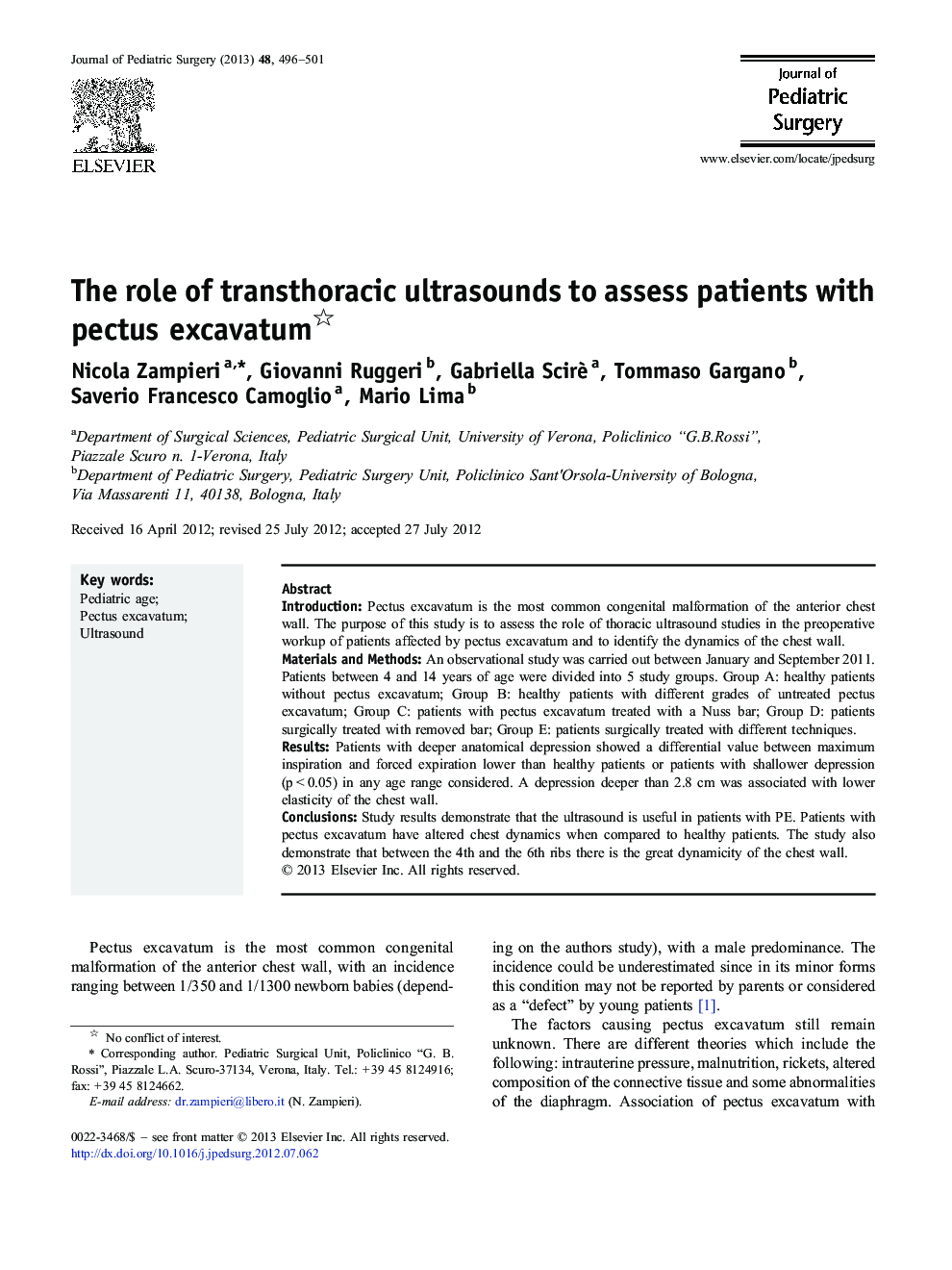| Article ID | Journal | Published Year | Pages | File Type |
|---|---|---|---|---|
| 6217517 | Journal of Pediatric Surgery | 2013 | 6 Pages |
IntroductionPectus excavatum is the most common congenital malformation of the anterior chest wall. The purpose of this study is to assess the role of thoracic ultrasound studies in the preoperative workup of patients affected by pectus excavatum and to identify the dynamics of the chest wall.Materials and MethodsAn observational study was carried out between January and September 2011. Patients between 4 and 14 years of age were divided into 5 study groups. Group A: healthy patients without pectus excavatum; Group B: healthy patients with different grades of untreated pectus excavatum; Group C: patients with pectus excavatum treated with a Nuss bar; Group D: patients surgically treated with removed bar; Group E: patients surgically treated with different techniques.ResultsPatients with deeper anatomical depression showed a differential value between maximum inspiration and forced expiration lower than healthy patients or patients with shallower depression (p < 0.05) in any age range considered. A depression deeper than 2.8 cm was associated with lower elasticity of the chest wall.ConclusionsStudy results demonstrate that the ultrasound is useful in patients with PE. Patients with pectus excavatum have altered chest dynamics when compared to healthy patients. The study also demonstrate that between the 4th and the 6th ribs there is the great dynamicity of the chest wall.
